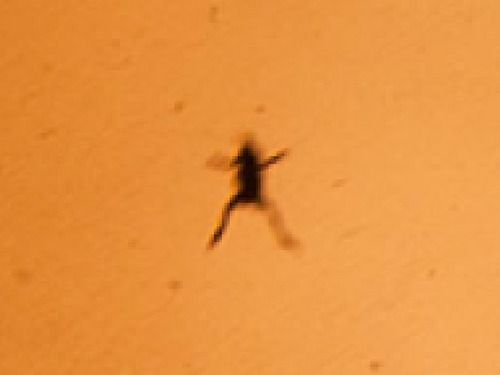I came across a photograph on Thursday and set it as my desktop wallpaper. I’ve been staring at it for three days. No, that’s not quite true. I’ve stared at it for maybe a total of seven minutes, looking at it seconds at a time, catching glimpses when browser windows close and open in between work on the novel and a talk I’m giving in Portland next week. You’ve seen the photograph too, I bet. It’s made an appearance on ESPN’s Around the Horn, even though it has nothing to do with sports.

One series of thoughts: How fast is it going? Where does it land? Do frogs land on their feet? What’s that frog thinking, at that moment? Probably something like: ojpifqijovapijwalkjrjpew, because it’s a frog, and frogs are pretty much always thinking ojpifqijovapijwalkjrjpew.

Another series: Rocket launches don’t happen in black, featureless voids. They happen in wetlands. Sudden light heat noise in a place of dark cool calm. The silhouette of the frog also brings to relief to the bits of wild grass threshed about in the smoke.

Man’s ambition. His destruction of the earth in his quest for the stars. The perfect geometry of the heavens. The Vitruvian geometry of the figure; it’s almost … human.

It brings to mind another photograph, taken twelve years prior, nearly to the day: a photograph of a man falling from the North Tower of the World Trade Center. The photograph ran on page seven of The New York Times and in hundreds of newspapers around the world, then virtually disappeared. Until two years later, when it became the subject of Tom Junod’s Esquire piece, “The Falling Man”.
But Junod’s piece is really about looking. It’s about what we see when we look, but also what, when we have the freedom to look, we individually and collectively choose not to look at. And what that says about us.

An analogy for a significant life event. Hopes. Horrors. Aversion. The fear of loss. The frame-obliterating nature of an act beyond routine. One moment you’re thinking about flies from your lilypad in the cool still night. You’re thinking about the book you’re writing and the speech you’re going to give. You’re thinking about how sore your feet are and your wife asleep in bed and the order at table five. And then …